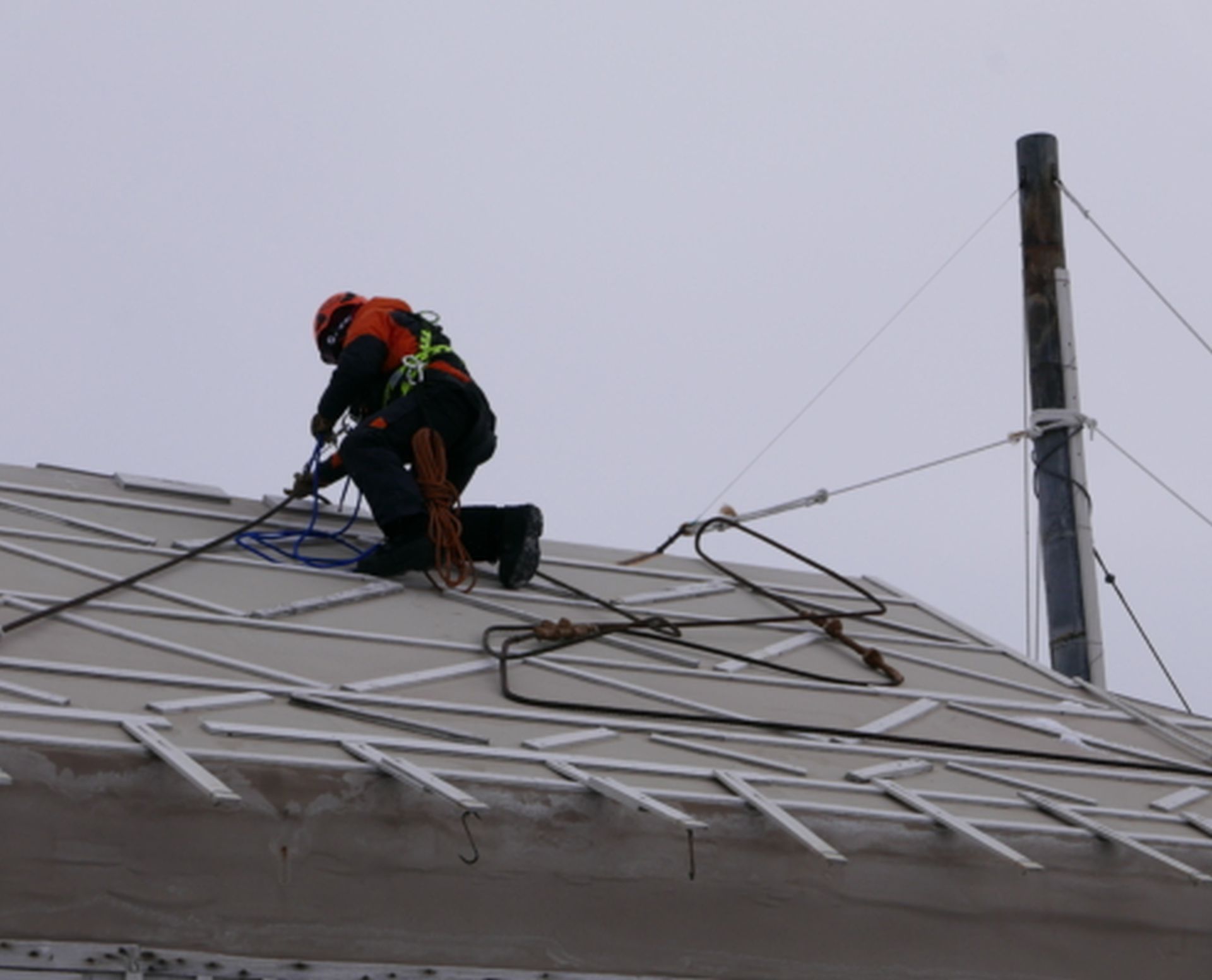Antarctic Conservation Season Update
Half the Team, Half the Time, Double the Support
Despite the challenges of Covid-19, our conservation team have successfully completed a scaled back essential monitoring and maintenance programme at the Ross Island historic huts in November and December 2020. Thanks go to Antarctica New Zealand, in what has been an extremely challenging year for their operations.
This was a very different season right from the beginning, with our team of two, Al Fastier and Lizzie Meek, first going into two weeks of quarantine in Christchurch alongside the cohort they would be travelling to Antarctica with. This was followed by a week of strict segregation procedures at Scott Base before their cohort could mix with others or leave the base to begin their work at the historic bases.
Due to the reduction in team size and programme this season, our team were supported by Scott Base Carpenter, Mike Southworth, and Field Support Officer Angela Buunk. The limited extent of sea ice this season, meant access to Cape Evans and Cape Royds was by helicopter, with all the team’s equipment carried by under-slung load.
Angela’s specialist rigging skills were invaluable this season as one of the main tasks at Cape Royds was to replace the anchoring rigging on Shackleton’s Hut, which had rusted out over time. The rigging is essential for securing the building against Antarctica’s extreme winds. A sample of the historic 1907 cable was taken last season, and the team mounted a worldwide search to find a replacement with the same diameter, number of strands, and inner core as the original marine towing cable. With help from Trust heritage consultant Gordon Macdonald, the right product was located in Canada, and we are grateful to the manufacturer, Northwest Wire Rope Limited, for sponsoring the cost of the cable, and to shipping company Extreme Global, for providing discounted freight services. To install each cable, the team had to dig down through the scoria to reach the existing deadman (or anchors) they are attached to. With the frozen ground like concrete, this took an average of half a day each, with one deadman taking a whole day to expose.
Other important tasks at Cape Royds included replacing UV-damaged covering fabric on fodder bales in the stables, and clearing snow and ice build-up around the hut. This was made more challenging for the team by the extreme cold with temperatures averaging -25° celsius and high winds they faced during their time at Cape Royds this season. The store cases stacked outside were conserved in 2006, but experience continual degradation due to the environment, so the team selected five ‘Venesta boxes’ to bring back to New Zealand to enable testing of a new repair method, that should extend their resilience to the harsh Antarctic conditions.
In addition to the support of Mike and Angela, Antarctica New Zealand provided an extra four people to service the field camp at Cape Evans, and to help clear snow and ice around Scott’s Terra Nova Hut. Key tasks at Cape Evans were to put an aluminium cap on top of a section of the polycarbonate deflection dam that prevents water from flowing under the hut, as this was being damaged by foot traffic around the building.
Inside, the team developed a solution for a rusted flue section which drops large flakes of rust onto the wardroom table. Thanks go to Antarctica New Zealand and the United States Antarctic Programme for arranging the manufacture of a replica flue cap.
At all sites, the team collected annual environmental data, part of a series which has been unbroken since 1990. In particular, data is being collected to try and narrow down ongoing sources of moisture within the buildings, especially in the subfloor area. New logging stations were installed at Cape Evans, to determine dust sources and quantities, and the specific components of the dust which are contributing to artefact damage. A particular area of focus is the Cape Evans stables.
It is always exciting for the team to return artefacts to the iconic buildings we care for and this season as well as the Salter scales featured in this edition, we were able to return a number of items to Hillary’s (TAE/IGY) Hut. These included a pair of windproof trousers, books, and manuals belonging to Arnold Heine, and a wonderful New Zealand flag once flown in Antarctica by TAE expeditioner George Lowe, a member of the first party to cross the continent. The flag was donated by Tony Lowe, a distant relative of George, and conserved with a fabric backing before being taken back to the Ice.
Replacing the anchoring rigging on Shackleton’s Hut at Cape Royds.
Snow removal at Scott’s Terra Nova Hut, Cape Evans.




